The Oldest Public Pissoirs of Paris: A Historical Insight
On Boulevard Arago, near the historic Fresnes Prison in the 14th arrondissement, stands one of Paris’ oldest surviving pissoirs. Its painted metal panels and modest, utilitarian design reflect a practical approach to public sanitation from a bygone era. Likely installed in the late 19th century, this humble structure once served as a discreet convenience for passersby, quietly fulfilling a necessary function in the city’s daily life.
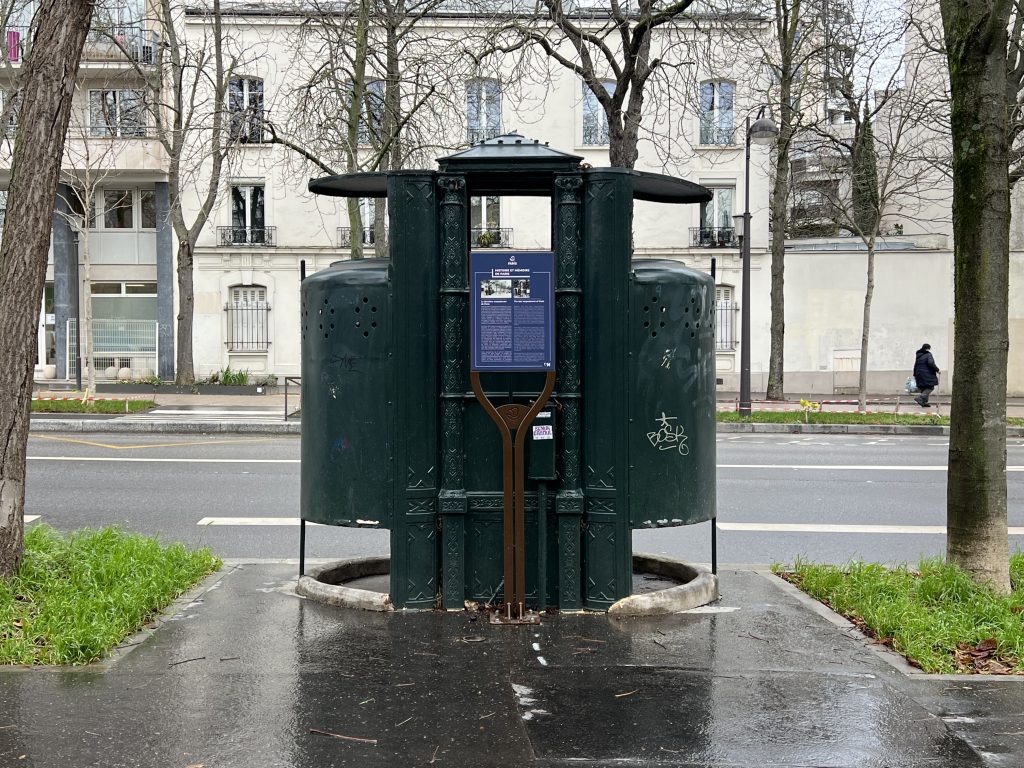
The historic 19th-century pissoir at Boulevard Arago, a rare remnant of Paris’s urban past. Photo: Fredrik Hagblom
On a chilly afternoon, I found myself drawn to this historic artifact—not just out of curiosity, but out of a genuine need. Approaching it, the simple privacy screens seemed to offer a welcome solution. Yet, when I reached for the entrance, I was met with the cold reality of a heavy padlock securing it shut. Its silence was resolute, a reminder that this relic no longer plays an active role in the city’s landscape.
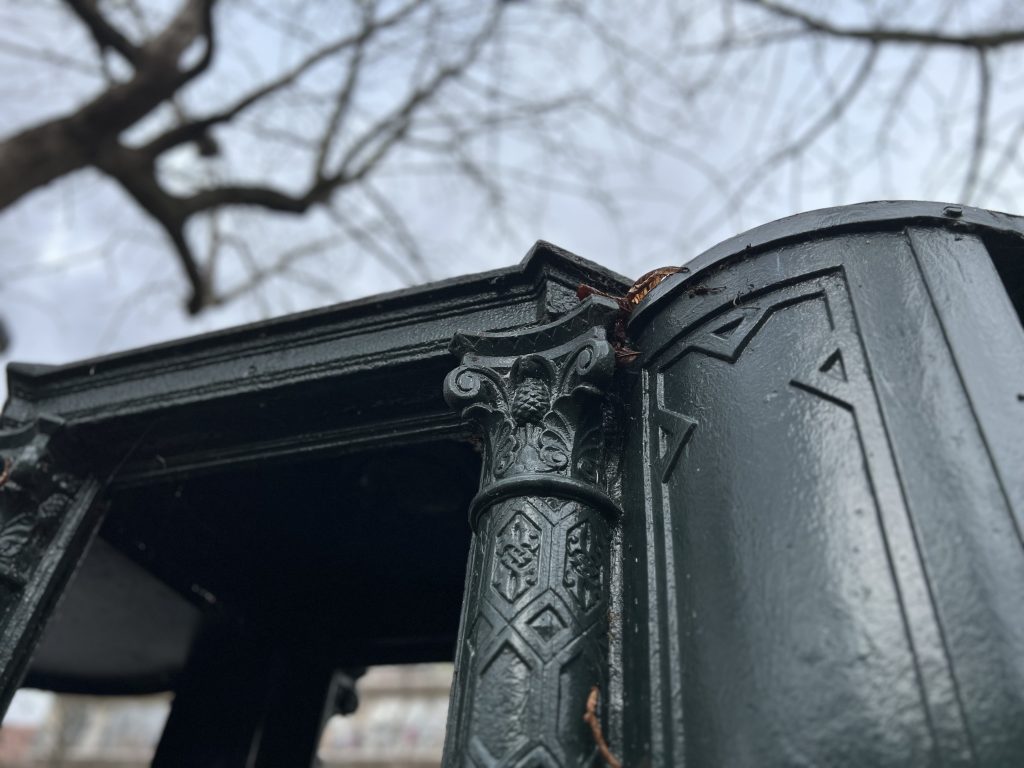
Intricate cast iron decorations on the historic pissoir at Boulevard Arago, reflecting 19th-century craftsmanship. Photo: Fredrik Hagblom
Even in its inactive state, the pissoir remains a subtle yet significant piece of Parisian history, blending into its surroundings while sparking curiosity for those who take the time to notice it. Though I left without the relief I was seeking, I walked away with a newfound appreciation for this quiet remnant of the past.
The streets of Paris are filled with reminders of the city’s evolution, and among the less celebrated but fascinating relics are the public pissoirs, or vespasiennes. These 19th-century open-air urinals were part of an ambitious effort to modernize Paris and improve public hygiene. While most have disappeared, a few still stand, offering a glimpse into a bygone era. At the same time, Paris has embraced modern public toilets to meet contemporary needs.
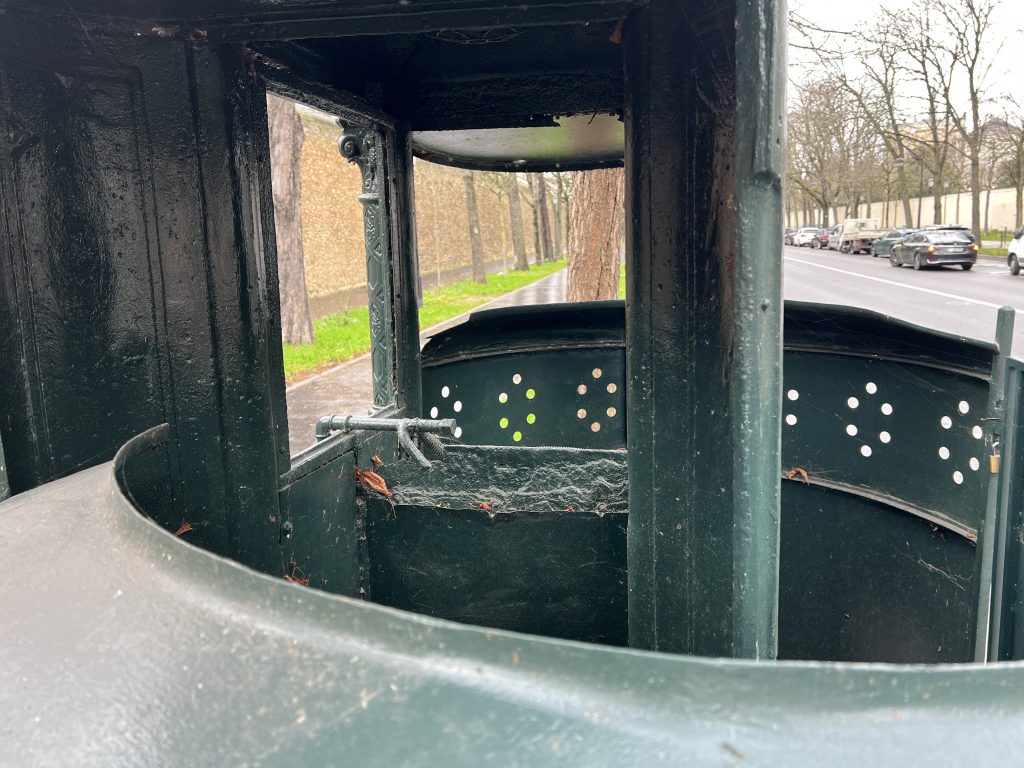
A glimpse inside the Boulevard Arago pissoir, revealing the intricate cast iron craftsmanship of this historic structure. Photo: Fredrik Hagblom
The Origin of Parisian Pissoirs
Public urinals were introduced to Paris in the 1830s as part of a wider movement to address public sanitation issues. Under the leadership of Baron Haussmann, who famously redesigned much of Paris, these facilities became a common sight across the city. The earliest models were simple cast-iron structures, designed to provide a discreet and practical solution to public urination, which was a widespread problem at the time.
At their peak in the late 19th century, there were more than 1,200 pissoirs scattered across Paris. Many were elegantly crafted, featuring decorative ironwork that reflected the aesthetics of the period. These structures were more than practical conveniences—they were symbols of a modernizing city that prioritized infrastructure and public health.
The Last Remaining Pissoirs
Today, only a few historic pissoirs remain. The most notable is the vespasienne at Square Henri-Galli, near Île Saint-Louis. This 19th-century structure features the classic cylindrical design with perforated iron panels, blending functionality with artistry. Although no longer in use, it stands as a quiet reminder of Paris’s urban past, tucked away in a small park.
Another significant example is the previous mentioned pissoir on Boulevard Arago.
The Public Urinal in the Luxembourg Gardens
Another noteworthy example of Paris’s public urinals is found in the Luxembourg Gardens, one of the city’s most beloved green spaces. Though less historic than the structures at Square Henri-Galli or Boulevard Arago, this urinal serves a practical purpose, accommodating the millions of visitors who enjoy the gardens annually.
Integrated seamlessly into the park’s layout, it reflects the continuing importance of providing public amenities in heavily frequented areas. Its presence underscores Paris’s ability to balance tradition and modern practicality, maintaining a commitment to accessibility while respecting the aesthetic harmony of its spaces.
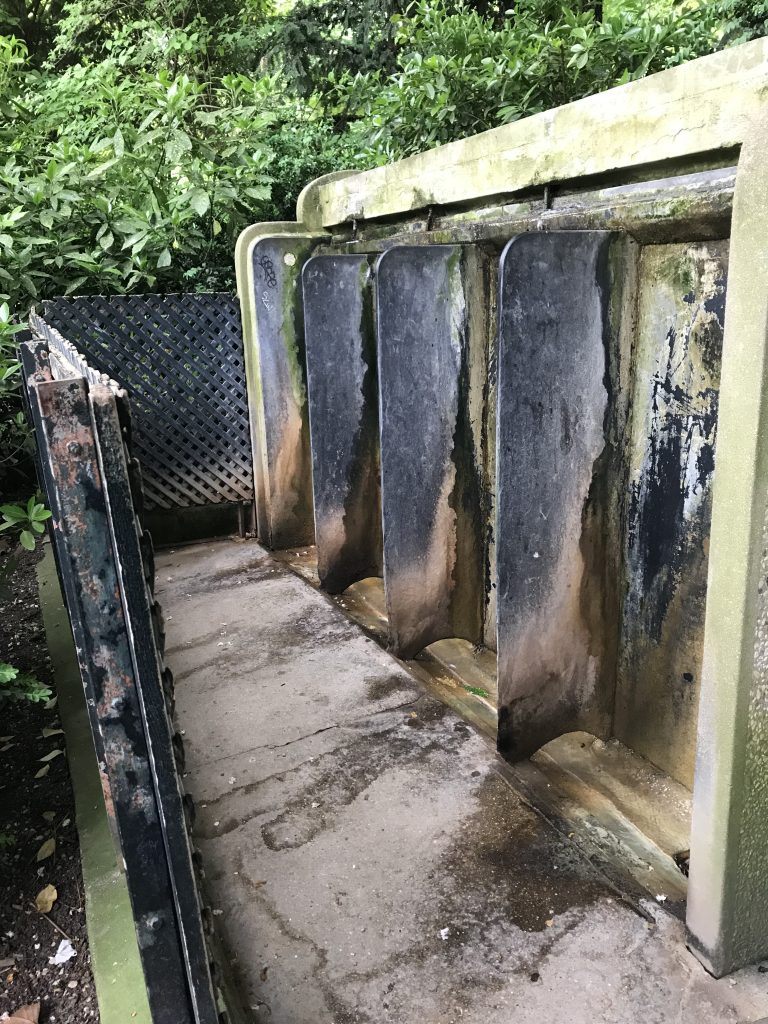
The public urinal in the Luxembourg Gardens, seamlessly integrated into the park’s layout, offers a nod to Paris’s commitment to practical amenities amidst historic surroundings. Photo: Fredrik Hagblom
The Rise of Modern Public Toilets
In the late 20th century, Paris began phasing out its traditional pissoirs in favor of modern alternatives. The introduction of Sanisettes in the 1980s marked a significant shift. These enclosed, self-cleaning toilets offered greater privacy, hygiene, and accessibility, addressing the changing needs of the city’s population and its millions of annual visitors.
Sanisettes are available across the city and are free to use as part of Paris’s commitment to inclusivity. Designed to be accessible to all genders and people with disabilities, they provide a clean and convenient solution for public sanitation. Their automated cleaning system ensures hygiene between uses, making them a practical improvement over the open-air pissoirs of the past.
Despite their functionality, Sanisettes lack the historical charm of vespasiennes. However, they represent Paris’s ongoing effort to modernize while maintaining its reputation as a welcoming city for residents and tourists alike.
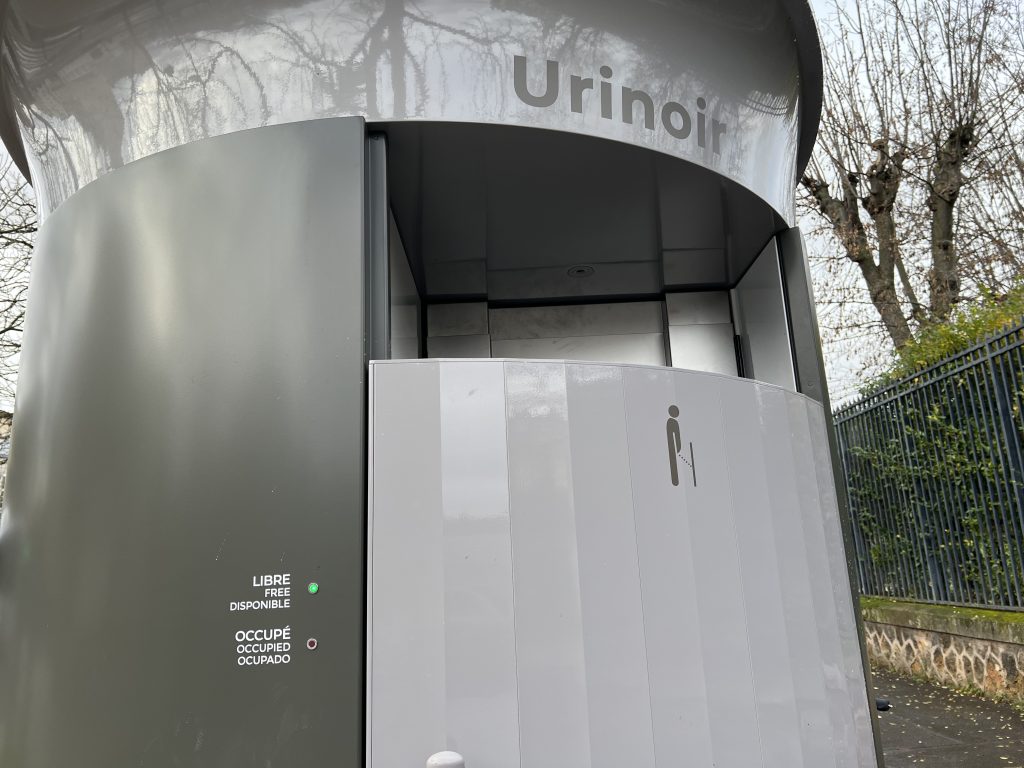
A modern-day public pissoir in Paris, blending practicality with contemporary design. Photo: Fredrik Hagblom
Preserving the Legacy
The remaining pissoirs, like those at Square Henri-Galli and Boulevard Arago, are relics of a pivotal moment in Paris’s history. They serve as a reminder of the city’s innovative efforts to improve public hygiene during a period of rapid urbanization. Similarly, the functional urinals in places like the Luxembourg Gardens highlight how Paris continues to meet the needs of its residents and visitors while respecting its historical roots.
By incorporating modern facilities like Sanisettes, Paris demonstrates its ability to adapt to evolving demands while preserving the memory of its unique past. These structures, old and new, offer a fascinating lens through which to view the city’s history and its approach to balancing practicality with cultural heritage.

Yours truly by the historic pissoir at Boulevard Arago, a rare piece of Parisian history.
Check it out
The oldest standing pissoir of Paris can be found on Boulevard Arago in the 13th arrondissement. You can locate it easily on Google Maps by searching “oldest pissoir of Paris.” When I visited, it was closed, so don’t count on using it—but it’s still worth a visit to admire this piece of history. I hope it will be renovated and preserved for the future.
History of the pissoir on Wikipedia
